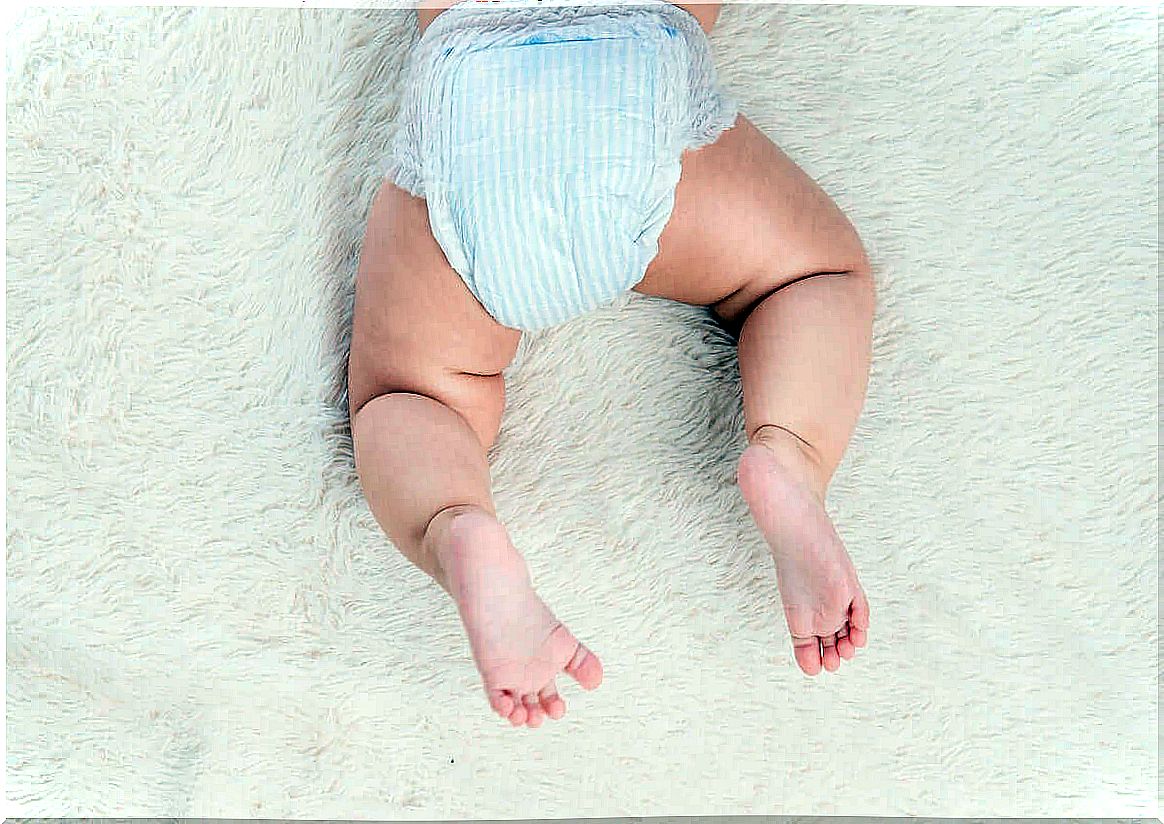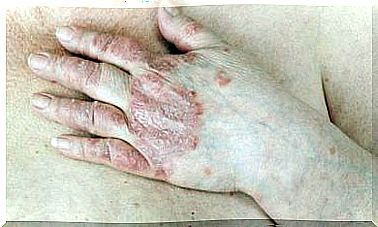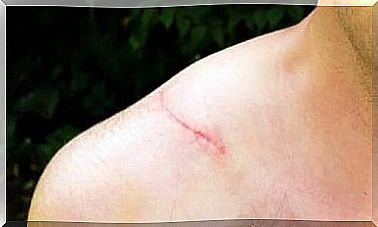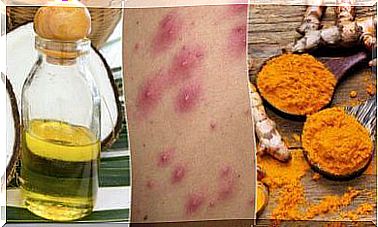The Types Of Diaper Rash: Symptoms And Treatment

Diaper rash is the most common skin condition in young babies. There are several types of diaper rash, which are usually a mild, self-limiting condition that requires minimal intervention.
In most cases, it occurs on the buttocks and genital area. However, it can also appear on the lower abdomen and upper legs due to contact with irritants.
According to information in Pediatric Dermatology , this condition results from friction, excessive skin hydration, and changes in skin pH, among other things. It is also more common during the baby’s first year of life.
So what types of diaper rash are there? And what are the symptoms? How can you treat diaper rash? Read everything you need to know about it today in this article.
Symptoms of diaper rash

Diaper rash is an inflammatory reaction of the skin around the diaper area. Keep in mind that babies have thinner skin, which means they produce less secretions and are more prone to infection or irritation. Yet the most important factor in this condition is the covering of the skin by the diaper.
Symptomatology depends on the severity and time of evolution of dermatitis. According to information collected by the Spanish Society of Outpatient Pediatrics and Primary Care (Spanish link), some of the clinical manifestations are the following:
- Itching of variable intensity.
- Subtle redness in mild cases.
- Intense inflammation ( in severe cases there may even be blood loss ).
- Changes in the baby’s mood due to significant irritation in the area around the diaper.
What are the causes?
Diaper rash is the result of a combination of several factors. These include increased moisture, prolonged contact with urine or feces, and other irritants such as detergents.
The second most common cause of diaper dermatitis is infection. In particular, a fungal infection, especially Candida albicans, is the most common infectious cause. In the same way, other mycoses can be associated with diaper rash, such as:
- Infection by dermatophytosis.
- The exacerbation of seborrheic dermatitis.
- Pseudomycosis conditions such as erythrasma.
The types of diaper rash
Diaper rash is any skin condition that occurs in the area that comes in contact with the diaper. This inflammation, in turn, can be the result of several factors. In this sense, we can categorize them as follows.
Irritant Contact Dermatitis
Irritant contact dermatitis is the most common of the types of diaper rash. Its appearance is related to skin contact with feces and urine that accumulate in the diaper. However, the folds in the groin are usually healthy, with no changes, as they have less contact with irritants.
To avoid this, studies from AEPED recommend keeping the area clean and dry at all times. You also need to change your child’s diaper repeatedly throughout the day.
Diaper candidiasis
Diaper rash is a fungal infection that occurs as a result of the overgrowth of a type of fungus that normally lives in the digestive microbiota. The signals that characterize it are the following:
- Very red spots
- Shiny injured skin
- Clearly defined lesions
- To swear
- Compromised Groin Folds
Dermatitis from bacteria
In a few cases, bacterial dermatitis, also called impetigo or impetigo, is observed. However, staphylococcus and streptococcus often cause diaper rash or worsen an existing one. A hallmark sign of a strep infection is the bright red skin around the anus.
Allergic Dermatitis
Babies with sensitive skin may develop some sort of allergic reaction to some part of the diapers or creams. The most common allergens include:
- Elastic or dyes in the diaper
- Perfumes
- Preservatives in hygiene products
Is it possible to prevent diaper rash?

The treatment of diaper rash has two main goals. Firstly to heal the damaged skin and secondly to prevent recurrence of the rash. With that in mind, below are some helpful strategies for achieving these goals.
- Good hygiene is essential to maintain the integrity of the skin and prevent further breakdown. You can reduce exposure to irritants such as urine and feces by using regular diaper changes and super absorbent diapers that help reduce skin overhydration.
- Also, always make sure to wash and clean the diaper area with a soap-free detergent and water.
- Finally, contrary to popular belief, studies in pediatric dermatology show that baby wipes do not damage the skin. The new formulations of this product, including pH buffers, also help to balance the alkaline pH of the urine and prevent skin damage.
Treatment of diaper rash
Remember that regardless of the type of infection in the diaper area, diagnosis and treatment by the pediatrician or dermatologist is required. Once a doctor has determined the type of diaper rash your child has, he or she will determine the cause and determine therapeutic options.
In the case of irritant contact dermatitis, you should observe proper hygiene and also leave your child without a diaper for a few minutes afterwards. Finally, apply a zinc ointment-based preparation to the area before completing the diaper change. If you are dealing with a yeast infection, you should apply a topical ointment containing imidazolics.
When should you see a doctor?
If the baby’s diaper rash does not go away with the above measures, you should consult a doctor so that he or she can prescribe the correct medication. In addition, in case of pus, ulcers, fever or any other clinical manifestation of a complication, you should immediately consult a doctor.
In most cases, these types of dermatological problems improve with basic care, such as avoiding irritants and practicing good hygiene. Nevertheless, it is best to inform your pediatrician about the symptoms.









